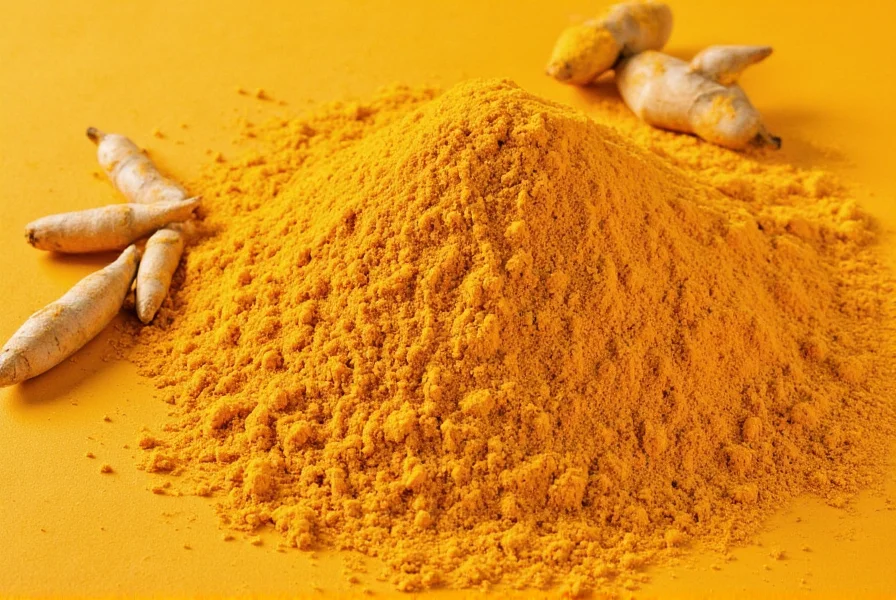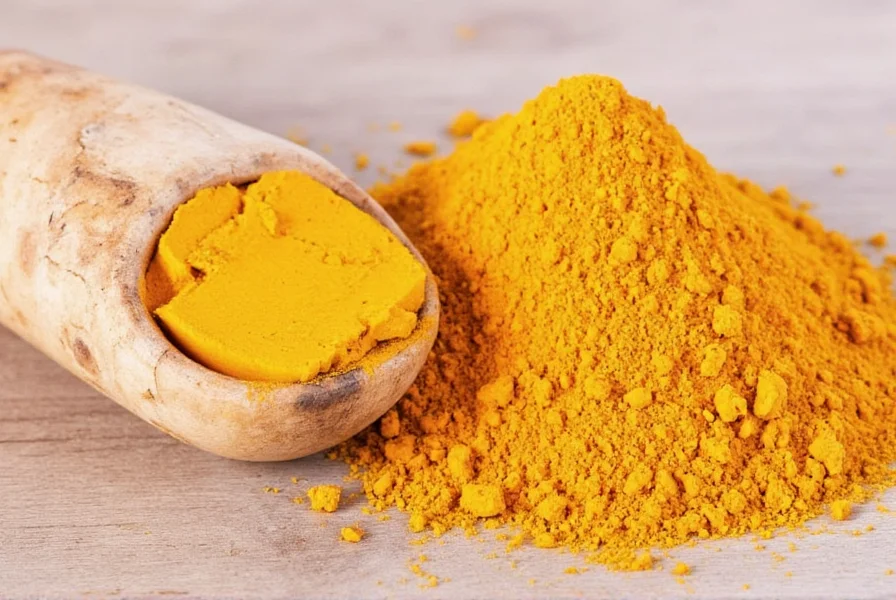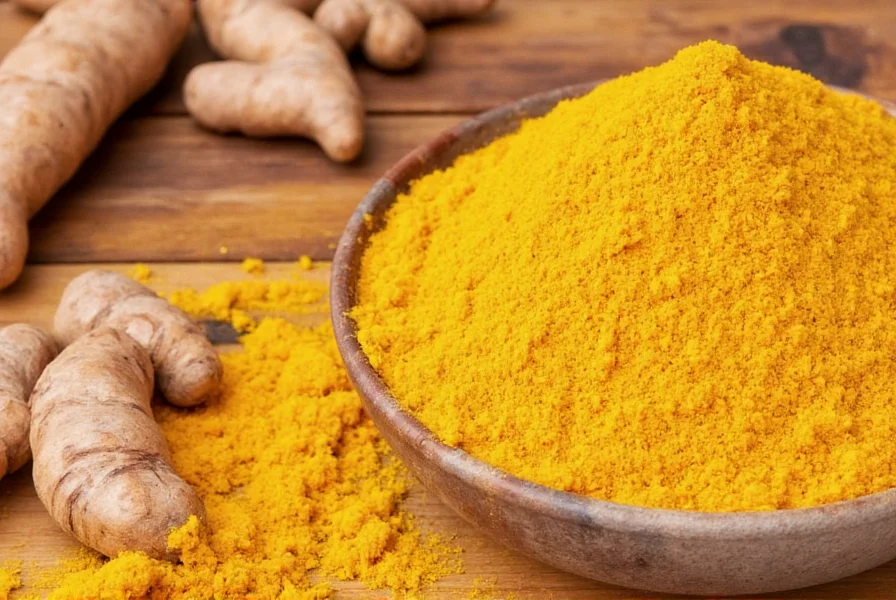When evaluating organic turmeric, understanding what organic certification actually guarantees is crucial. Many consumers assume organic turmeric contains significantly more curcumin or offers dramatically enhanced health benefits compared to conventionally grown varieties. Research indicates the nutritional profile remains largely similar, with the key distinctions relating to agricultural practices and potential contaminant levels.
What Makes Turmeric "Organic"?
Organic turmeric must meet strict certification standards that vary by region but generally require:
- At least 95% organic ingredients by weight
- No synthetic pesticides or herbicides during cultivation
- No genetically modified organisms (GMOs)
- No sewage sludge as fertilizer
- Soil conservation practices
- Third-party verification through accredited certifying agencies
In the United States, the USDA Organic seal indicates compliance with National Organic Program standards. The European Union has its own organic certification (Euro-leaf), while India uses the India Organic certification through the National Programme for Organic Production (NPOP).
| Certification | Region | Key Requirements |
|---|---|---|
| USDA Organic | United States | 3-year transition period, no synthetic inputs, annual inspections |
| Euro-leaf | European Union | Prohibited GMOs, mandatory crop rotation, strict pesticide limits |
| India Organic | India | Participatory Guarantee System option, focus on traditional farming |
| Organic JAS | Japan | Stringent residue testing, specific processing standards |
Nutritional Comparison: Organic vs Conventional Turmeric
Multiple studies have examined whether organic farming practices affect turmeric's nutritional profile. Research published in the Journal of Agricultural and Food Chemistry found that while curcumin content remains relatively consistent across farming methods, organic turmeric often shows:
- 10-15% higher total antioxidant capacity
- Lower levels of heavy metals like lead and cadmium
- Negligible pesticide residues compared to conventional samples
- Slightly higher levels of certain volatile oils
The difference in curcumin content—the primary active compound in turmeric—typically ranges from 0.5% to 1.5% between organic and conventional varieties, well within natural variation. This means organic turmeric isn't necessarily more potent in terms of its primary therapeutic compound.

Health Benefits Supported by Research
Turmeric's health benefits primarily stem from curcumin, which demonstrates:
- Anti-inflammatory properties: Multiple clinical trials show curcumin reduces inflammatory markers like CRP and IL-6 at doses of 500-2,000 mg daily
- Antioxidant effects: Curcumin neutralizes free radicals and boosts the body's own antioxidant enzymes
- Potential cognitive benefits: Research in American Journal of Geriatric Psychiatry suggests improved memory in adults with mild cognitive impairment
- Joint health support: Several studies indicate reduced pain and improved function in osteoarthritis patients
When considering organic turmeric for inflammation, the primary advantage isn't higher curcumin content but reduced exposure to agricultural chemicals that might counteract some benefits.
Is Organic Turmeric Worth the Higher Price?
The premium for organic turmeric typically ranges from 20-50% over conventional varieties. Whether this represents value for organic turmeric depends on individual priorities:
- For those concerned about pesticide exposure, organic provides significantly lower residues
- Environmentally conscious consumers may prefer organic farming's soil conservation benefits
- Those using turmeric medicinally should prioritize standardized curcumin content over organic status
- Budget-conscious users can achieve similar health benefits with conventional turmeric when properly washed
Research from the Journal of Food Science indicates that thorough washing removes 70-90% of surface pesticide residues from conventional turmeric, narrowing the practical health difference between organic and conventional options for many consumers.
How to Choose Quality Organic Turmeric
Not all organic turmeric products deliver equal quality. When selecting products, consider these factors:
- Certification verification: Look for legitimate certification logos and verify them through the certifier's website
- Curcumin content: Reputable brands disclose curcumin percentages (typically 2-6% for raw turmeric)
- Processing methods: Cold-processing preserves more active compounds than high-heat methods
- Origin transparency: Quality producers specify growing regions (India, Thailand, and Jamaica produce distinctive varieties)
- Third-party testing: Look for products with independent lab results for purity and potency

Maximizing Benefits from Organic Turmeric
To get the most from organic turmeric for health benefits, follow these evidence-based practices:
- Combine with black pepper: Piperine in black pepper increases curcumin absorption by up to 2,000%
- Use with healthy fats: Curcumin is fat-soluble; consume with coconut oil, olive oil, or avocado
- Heat gently: Light cooking enhances curcumin bioavailability but prolonged high heat degrades compounds
- Consider formulation: For therapeutic use, look for products with enhanced absorption technology
- Maintain consistent intake: Benefits accumulate with regular consumption over weeks and months
A 2022 review in Nutrients concluded that the most effective approach combines moderate daily intake (500-1,000 mg of standardized extract) with proper absorption enhancers rather than extremely high single doses.
Potential Side Effects and Safety Considerations
Both organic and conventional turmeric are generally safe at culinary doses, but higher therapeutic doses require caution:
- May interact with blood thinners like warfarin
- Potential gastrointestinal discomfort at doses above 1,500 mg daily
- Theoretical risk of gallbladder issues in susceptible individuals
- Limited safety data for pregnant or breastfeeding women at medicinal doses
- May lower blood sugar, requiring monitoring for diabetics
The American Botanical Council notes that organic turmeric side effects mirror those of conventional varieties since the active compounds are identical. The primary safety advantage of organic is reduced exposure to pesticide residues.
Common Misconceptions About Organic Turmeric
Several myths persist about organic turmeric that deserve clarification:
- Myth: Organic turmeric contains significantly more curcumin
Fact: Curcumin levels depend more on variety and growing conditions than organic status - Myth: Organic means completely pesticide-free
Fact: Organic farming permits certain natural pesticides; the difference is in the types and amounts used - Myth: Organic turmeric works better for inflammation
Fact: Effectiveness depends on curcumin content and absorption, not organic certification - Myth: All "natural" turmeric is organic
Fact: "Natural" is an unregulated term with no certification requirements
Practical Applications in Daily Life
Incorporating organic turmeric into your diet can be simple and delicious:
- Add to morning smoothies with black pepper and healthy fats
- Prepare golden milk with organic turmeric, coconut milk, and cinnamon
- Use in salad dressings with olive oil and lemon juice
- Include in vegetable roasting for enhanced flavor and color
- Create a turmeric-honey paste for immune support
For those exploring organic turmeric for skin health, topical applications in face masks combining turmeric with yogurt or honey show promise for reducing inflammation and improving complexion, though research remains preliminary.
Conclusion
Organic turmeric offers peace of mind regarding agricultural practices and reduced chemical exposure, but doesn't inherently provide dramatically superior health benefits compared to well-sourced conventional turmeric. The decision to choose organic should consider personal values, budget constraints, and specific health goals. For therapeutic applications, standardized curcumin content and proper absorption methods matter more than organic certification alone. When selecting any turmeric product, prioritize transparency about sourcing, testing, and curcumin content over marketing claims.
Frequently Asked Questions
Does organic turmeric have more curcumin than regular turmeric?
Research shows minimal difference in curcumin content between organic and conventional turmeric. Most studies find variations of less than 1.5% between farming methods, well within natural variation among different turmeric varieties and growing conditions. The primary differences relate to farming practices and potential contaminant levels rather than curcumin concentration.
Is organic turmeric worth the extra cost?
Whether organic turmeric provides value depends on individual priorities. If reducing pesticide exposure is important to you, organic offers significantly lower residues. Environmentally conscious consumers may appreciate organic farming's soil conservation benefits. However, for therapeutic use, standardized curcumin content matters more than organic status. Thoroughly washing conventional turmeric removes 70-90% of surface pesticides, narrowing the practical health difference for many users.
How can I verify if turmeric is truly organic?
Check for legitimate certification logos from recognized agencies like USDA Organic, EU Organic, or India Organic. Reputable brands provide verification methods, often through a certification number you can check on the certifier's website. Be wary of products with vague claims like "natural" or "chemical-free" without proper certification. Third-party testing documentation for purity and potency also indicates a trustworthy product.
What's the best way to use organic turmeric for maximum health benefits?
To maximize benefits from organic turmeric, combine it with black pepper (which contains piperine to increase absorption by up to 2,000%) and healthy fats like coconut oil or avocado since curcumin is fat-soluble. Gentle heating enhances bioavailability, but avoid prolonged high heat. For therapeutic effects, consistent daily intake of 500-1,000 mg of standardized extract works better than occasional high doses. Culinary uses include golden milk, smoothies, salad dressings, and roasted vegetables.
Are there any safety concerns specific to organic turmeric?
Organic turmeric shares the same safety profile as conventional turmeric since the active compounds are identical. Potential concerns include interactions with blood thinners, gastrointestinal discomfort at high doses (above 1,500 mg daily), and theoretical risks for those with gallbladder issues. The primary safety advantage of organic is reduced exposure to synthetic pesticide residues. As with any supplement, consult your healthcare provider before using turmeric medicinally, especially if you have health conditions or take medications.











 浙公网安备
33010002000092号
浙公网安备
33010002000092号 浙B2-20120091-4
浙B2-20120091-4